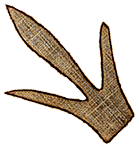 MENU
MENU
 MENU
MENU
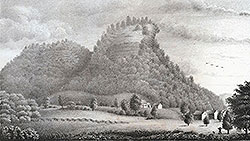 Mount Sugarloaf
Mount Sugarloaf
Compare how this popular landmark was depicted by different artists over two centuries.
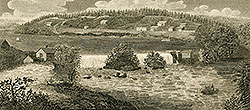 Below the Dam at Turners Falls
Below the Dam at Turners Falls
Then and Now showing the area below the Turners Falls dam, with water and without.
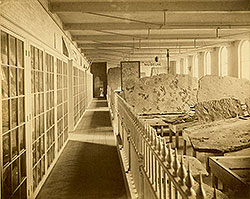 Hitchcock's Fossils on Display
Hitchcock's Fossils on Display
Fossils in Hitchcock's Appleton cabinet and in today's Beneski Museum of Natural History.
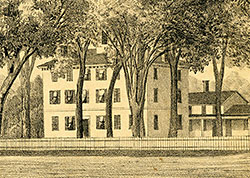 Deerfield Academy - Memorial Hall Museum
Deerfield Academy - Memorial Hall Museum
The original building for Deerfield Academy was designed by Asher Benjamin and today houses Memorial Hall Museum.
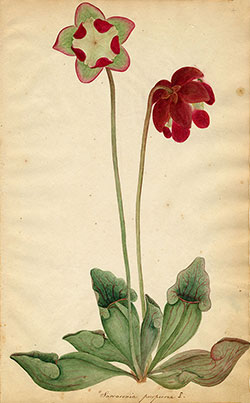 Orra White Hitchcock's Botanical Illustrations
Orra White Hitchcock's Botanical Illustrations
These paintings are just a few of the hundreds that Orra White Hitchcock created as a result of her life-long fascination with plants.
 Orra White Hitchcock's Landscapes
Orra White Hitchcock's Landscapes
Connecticut River Valley Landscapes by Orra White Hitchcock
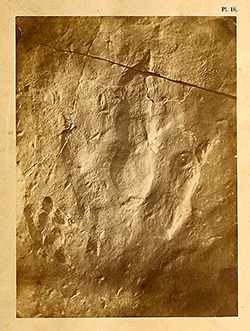 Representing Fossil Footprints
Representing Fossil Footprints
Visualizing fossil footprints has changed as communication and printing technology has advanced.
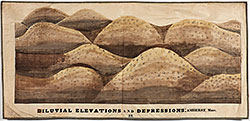 Orra White Hitchcock’s Classroom Art
Orra White Hitchcock’s Classroom Art
Drawings done by Orra White Hitchcock for use in Professor Edward Hitchcock's classes on geology and natural history at Amherst College.
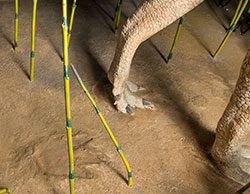 Who Made These Tracks? Dinosaur Types
Who Made These Tracks? Dinosaur Types
Matching the animal with the track they left behind.
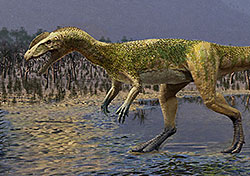 Dinosaurs in the Valley
Dinosaurs in the Valley
Artist Will Sillin depicts some of the dinosaurs that inhabited the Connecticut River Valley during the Triassic and Jurassic eras.
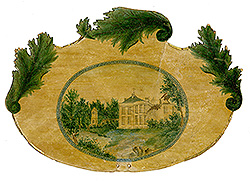 Schoolgirl Art
Schoolgirl Art
These examples of artwork were made by Orra White's students at Deerfield Academy.
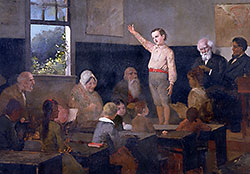 A Window on the World: Views of 19th Century Life in American Schoolbooks, 1823-1852
A Window on the World: Views of 19th Century Life in American Schoolbooks, 1823-1852
These books show what educators in the 19th century wanted children to understand about their world.
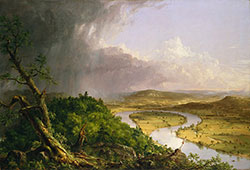 The Oxbow
The Oxbow
The Oxbow of the Connecticut River near Northampton, Massachusetts has been depicted by artists from the 19th century until the present.
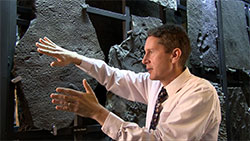 A Rainy Day in the Jurassic
A Rainy Day in the Jurassic
Museum educator Fred Venne takes us back 200 million years, recreating the day this fossil was made in the mud.
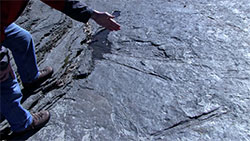 Plant Fossils
Plant Fossils
Dr. John Brady shows plant fossils in the rock where dinosaur footprints were also preserved.
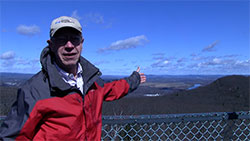 The Rift Valley
The Rift Valley
Dr. John Brady explains how the breakup of the supercontinent created the valley where dinosaurs left their footprints.
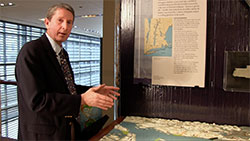 Glacial Forces: The Tracks Revealed
Glacial Forces: The Tracks Revealed
We can find dinosaur footprints in the Connecticut River Valley today thanks to glacial scouring.
 Testimony of the Rocks
Testimony of the Rocks
Dr. Robert Bakker describes how 19th-century creationists viewed prehistoric life.
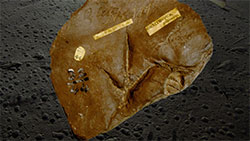 The Mystery of the Backward-pointing Toe
The Mystery of the Backward-pointing Toe
The surprising reason that some dinosaur footprints have a toe that points back, like a modern bird’s.
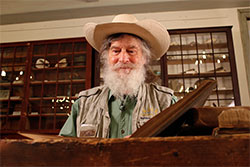 The Book of Rocks
The Book of Rocks
To some Christians, the Book of Genesis and the “Book of Nature” found in fossil footprints work together.
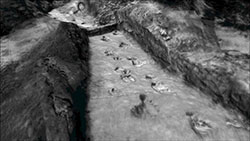 Paluxy River Dinosaur Chase Sequence
Paluxy River Dinosaur Chase Sequence
Fly-through of a 3D digital model of the Paluxy River, Texas, dinosaur tracksite.
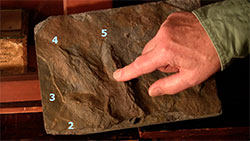 Fossil Footprints: Breaking the Code
Fossil Footprints: Breaking the Code
Dr. Robert Bakker shows the reasoning that led Edward Hitchcock to identify the track makers as birds.
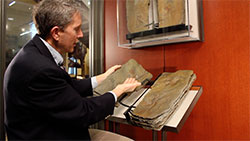 Hitchcock's Track Book
Hitchcock's Track Book
Hitchcock separated rock layers into “books” to show how the shape of an impression changes for each layer.
 Edward Hitchcock's "Ichnology of New England"
Edward Hitchcock's "Ichnology of New England"
Dr. Robert Bakker introduces Edward Hitchcock’s major work on fossil footprints and other trace fossils.
 Fossil Fish
Fossil Fish
Late Triassic–Early Jurassic seas teemed with fish whose fossilized remains litter the strata near the dinosaur footprints.
 Dinosaur Footprints
Dinosaur Footprints
Dr. John Brady takes us on a tour of an outdoor dinosaur footprint site in Holyoke, Massachusetts.
 One Creature, Many Tracks: Track Diversity
One Creature, Many Tracks: Track Diversity
Dr. Stephen Gatesy and Dr. Peter Falkingham’s research shows how one dinosaur could make different types of tracks.
 Find the Footprints
Find the Footprints
Test your fossil-finding skills! Can you identify the fossil footprints in these rocks?
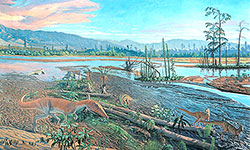 Late Triassic Landscape
Late Triassic Landscape
Explore the animals and plants that lived in the Connecticut River Valley during the late triassic.
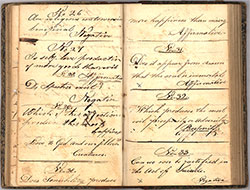 "Topics Under Consideration" Quiz
"Topics Under Consideration" Quiz
Orra White and her friends met regularly as "The Young Ladies Literary Society" to debate and answer profound questions. Let's see how you answer these same deep inquiries.